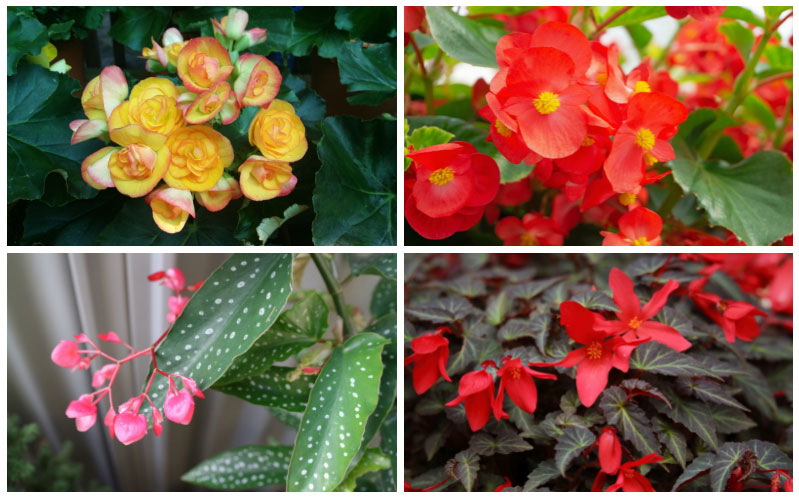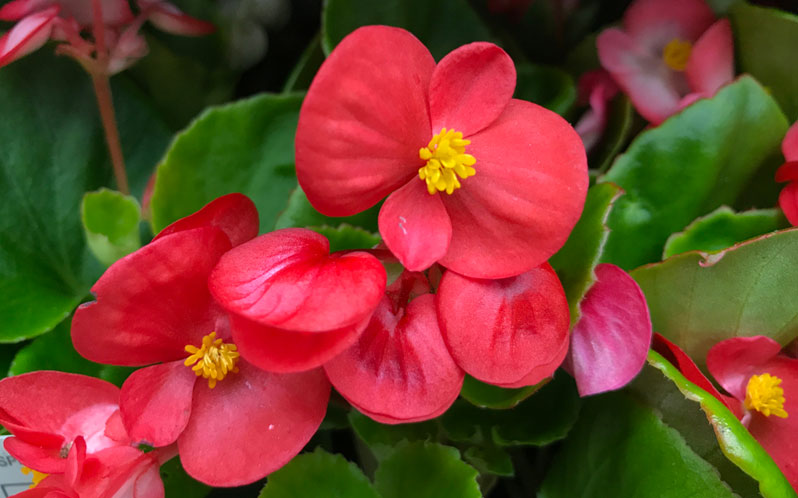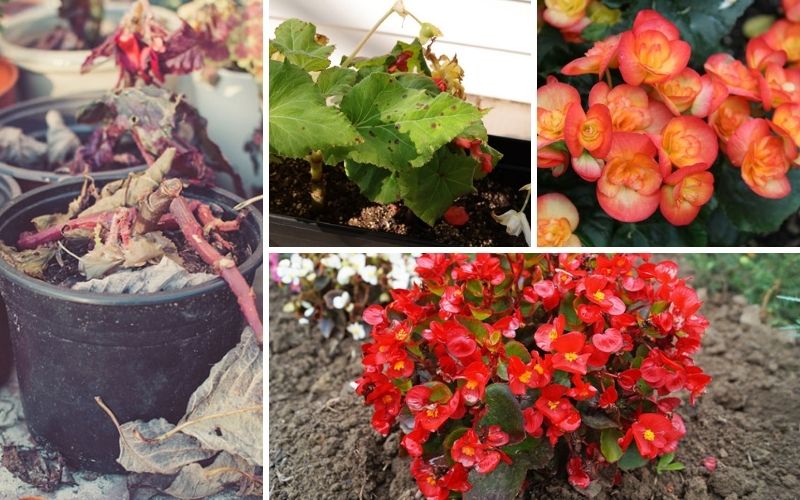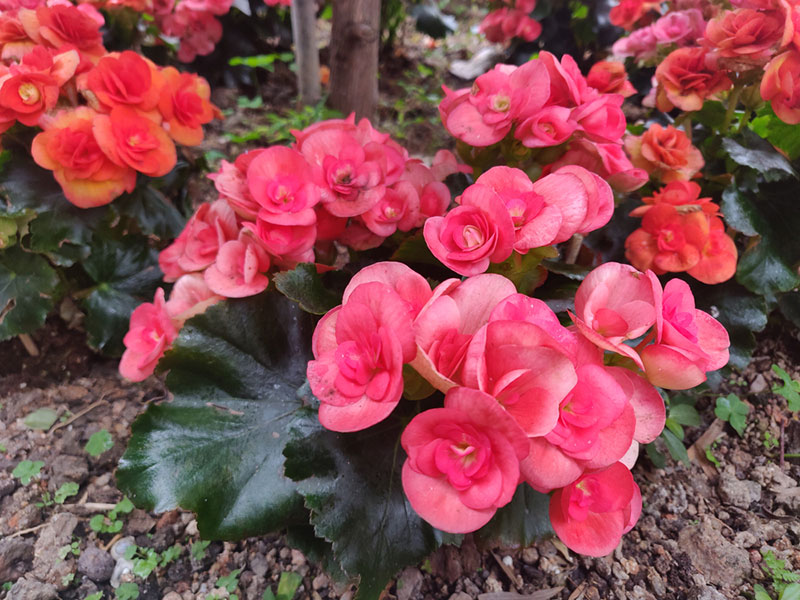Wax begonias are lovely plants that are popular for container gardening because of their vibrant flowers and attractive foliage. While those plants are eye-catching, pairing them with other flowering species or ferns can take the aesthetics of your container garden to the next level!
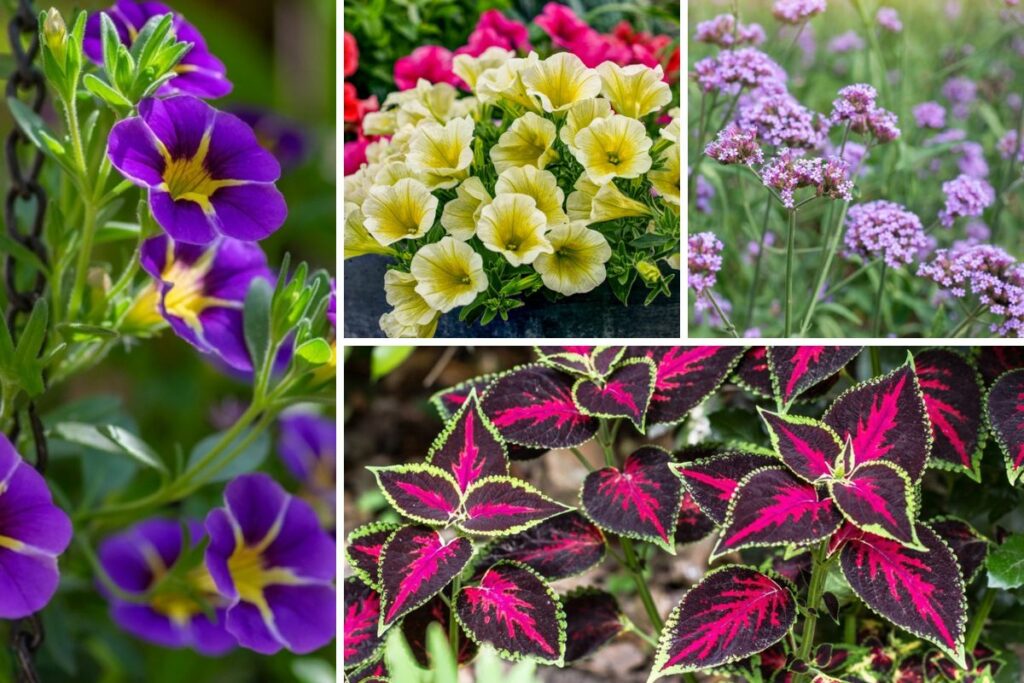
So, what to plant with wax begonias in pots?
In this article, we’ll list eight companion plants to grow with wax begonias, explaining their characteristics and suitable environmental conditions. So, continue reading for all the details!
1. Calibrachoa
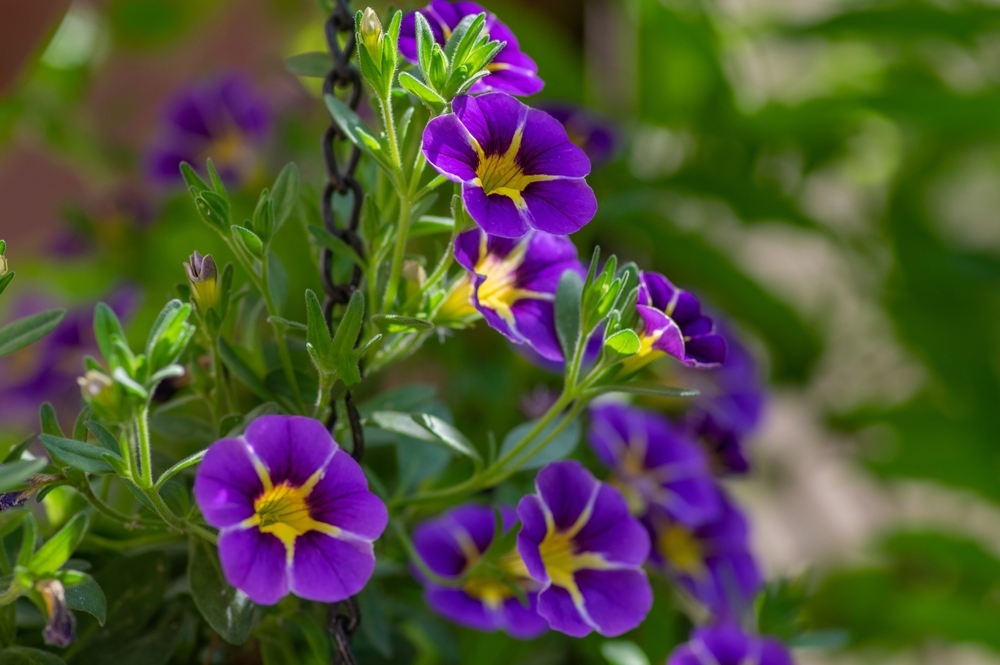
Starting off the list with one of the most popular outdoor container plants, calibrachoas, also known as million bells. The former plants are native to South America and are hardy in zones 9-11. However, they can be cultivated as annuals in most zones.
Those herbaceous plants grow up to 6-12 feet tall. They produce different foliage shapes, including ovate, elliptic, linear, or reverse ovate, all with flat or rolled-back edges.
However, leaves aren’t the only attractive feature of Calibrachoa plants. They also bloom from spring to fall, producing eye-catching petunia-like flower clusters. The petals of those inflorescences come in a rainbow of colors, including:
- Coral
- Yellow
- Orange
- Red
- Pink
- Blue
- Purple
- Burgundy
- Cream
Those vibrant flowers complement the colorful blooms of wax begonias and can be used to create a stunning display in hanging pots.
Planting calibrachoas with wax begonias is straightforward. Simply transplant those flowering species into well-draining, rich soil.
To spice up the aesthetics, place the million bell plants near the pot’s sides, as those plants have a trailing habit. Provide full sun, regular watering, and slow-release fertilizers to ensure blooming.
2. Petunias
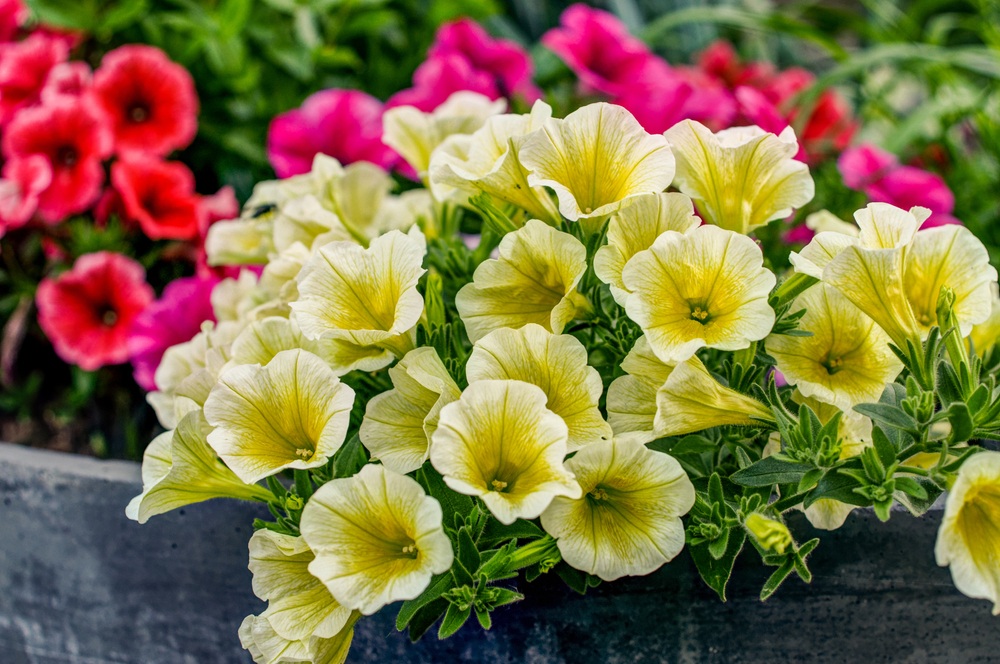
Another breathtaking flowering plant making this list is the petunia. Like calibrachoas, plants in the former genus are native to South America. They thrive in hardiness zones 10-11.
Depending on their appearance, petunias are classified into five primary groups: grandiflora, multiflora, floribunda, milliflora, and trailing. Petunias in the first group struggle in hot, humid climates, so they might not give the best result when planted with tropical wax begonias.
Those flowering plants are fast growers and can reach maximum growth in the late spring after several weeks of planting. The houseplant’s mature size is typically between 6 and 24 inches.
Petunias bloom in the spring, summer, and fall, ensuring visually appealing aesthetics in all three seasons! They produce wide, trumpet-shaped flowers and hairy foliage. Depending on the variety, blossom colors can be pink, purple, yellow, red, orange, green, or white.
To ensure blooming, expose your petunias to at least 6 hours of direct sunlight daily. Additionally, plant them in well-draining soil and feed the plants liquid fertilizers every three weeks in early to mid-June.
Water them weekly or when the first inch of the potting mix is dry. However, avoid overwatering, as those plants don’t tolerate soggy soil.
3. Nemesia
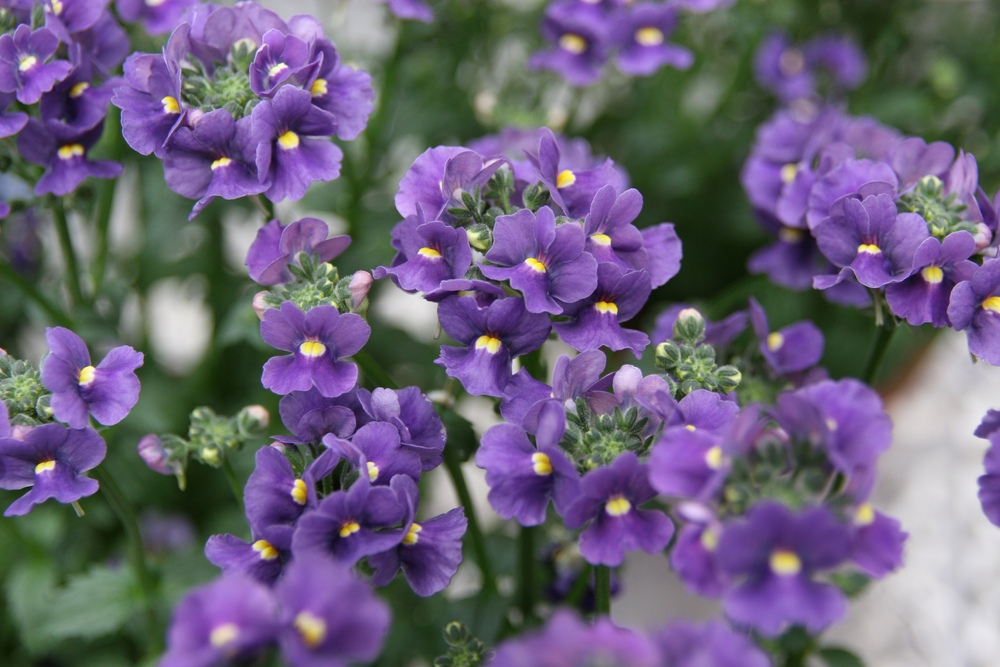
Nemesia plants are popular with gardeners thanks to their fast-growing, flowering nature, which creates a spectacular display. Native to South Africa, those plants survive zone 2-10 growing conditions.
Typically, Nemesia plants reach a mature size of 8-24 inches, depending on the species.
Those dwarf shrubs bloom from spring to summer, producing fragrant, tubular flowers in shades of pink, white, orange, red, and bicolor. So, you can pair them with wax begonias to add a pleasant scent and appeal to your container garden.
As you might have guessed, Nemesia varieties grow best in full sun and moist, well-draining, rich soil. However, steer clear of excess watering as those plants are susceptible to stem rot. Additionally, feed Nemesia plants time-release fertilizers in the spring.
4. Lobelia Erinus
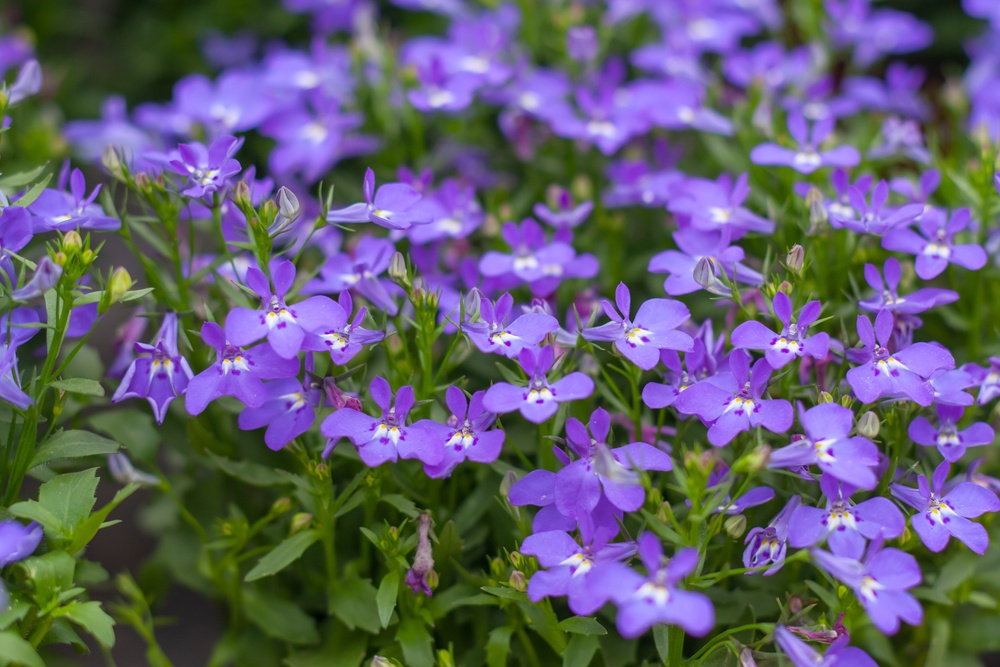
You can’t go wrong with pairing lobelias with other plants in your container garden. They produce colorful, small flowers that make for attractive window boxes when paired with wax begonias. Plus, they’re easy to maintain!
One of the most popular species in this genus is Lobelia erinus. Those plants are native to Africa, preferring tropical climates. They can withstand the winter in zones 10 to 11.
Lobelia erinus plants are small, reaching a mature size of 6-9 inches. They can also trail, a perk that makes them ideal for cascading over the sides of a container.
You can expect those flowering plants to bloom in the fall and spring. They produce white, blue, pink, or purple tubular flowers.
Growing lobelias doesn’t require much effort. Simply expose them to 6 hours of full sun and provide the same growth conditions as wax begonias. Those plants are heavy feeders, so make sure to feed them liquid fertilizer every 2-6 weeks to keep them flowering.
5. Coleus
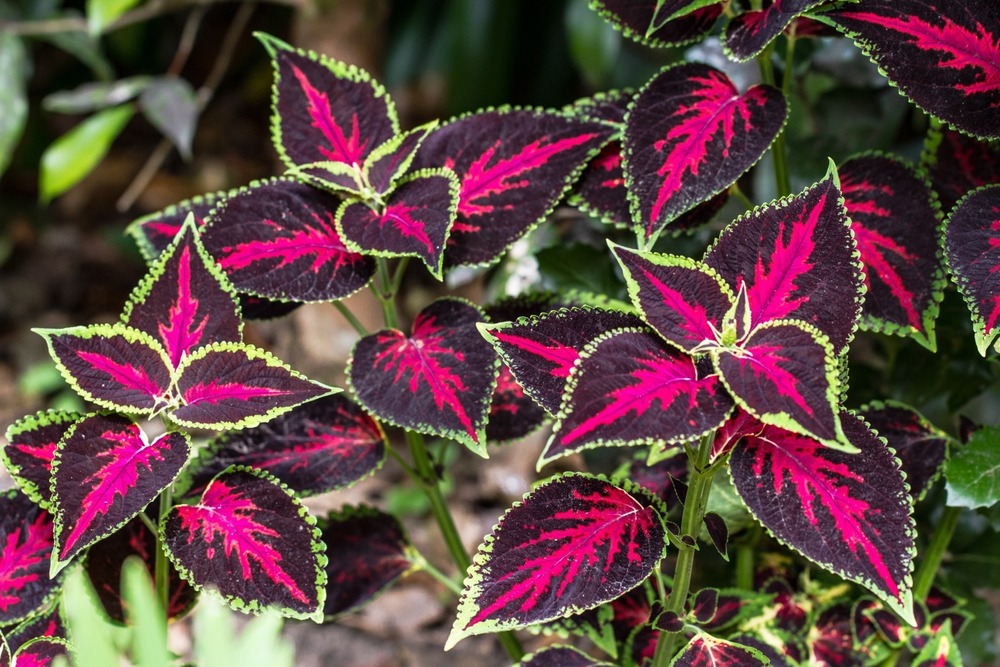
Coleus plants are an excellent companion option for wax begonias if you want to add interesting foliage to the container. Native to the Old World tropics, plants in the former genus thrive in hardiness zones 10-11.
Typically, those herbaceous perennials reach 6-36 inches tall at maturity. They produce vibrant foliage with various shapes, colors, and patterns that follow an opposite arrangement. The best part is that the breathtaking leaves maintain their color all season.
While they can bloom in the late summer, producing white to blue flowers, the blossoms are insignificant. Most gardeners trim them off to conserve the plant’s energy.
Coleus grows best in partial shade, as too much sun can scorch the leaves. They also thrive in well-drained, organic-matter-rich, moist soil with a slightly acidic pH. Those plants don’t require much feeding; fertilizing the soil once a month would be enough.
6. Dusty Miller
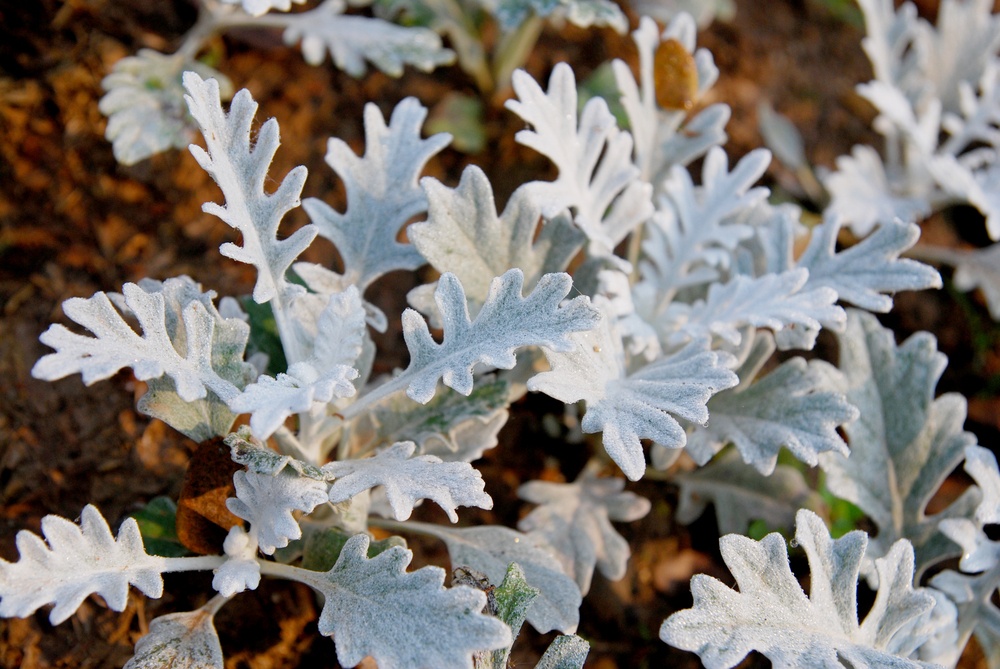
Dusty millers are a staple in every flowering garden thanks to their unique silvery-gray foliage that adds a delightful contrast when paired with blooms. The former subshrubs are native to the Mediterranean and are hardy in zones 7-10.
Those silver-foliage-producing plants are typically small, growing between 6 inches and 3 feet tall, a perk that makes them suitable for containers.
Aside from the showy color, dusty miller’s leaf shape is also eye-catching. They produce 2- to 6-inch-long leaves that are irregularly lobed. Additionally, the foliage has a velvety texture.
To grow those subshrubs, plant them in well-draining, rich soil and expose them to at least 6 hours of full sun. Additionally, prune the blooms to promote leaf growth.
7. Verbena
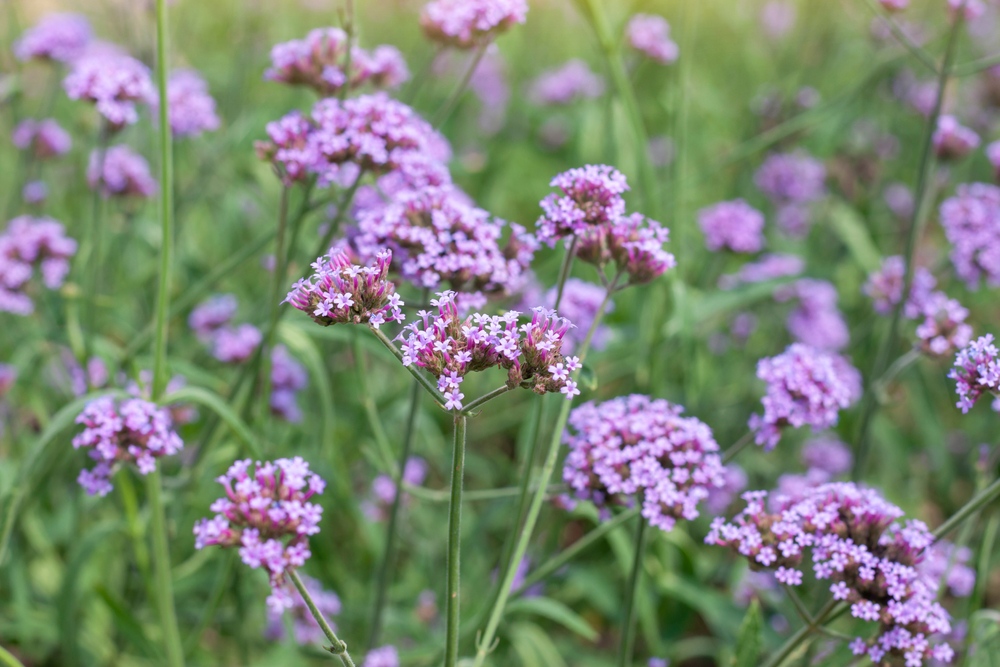
Due to their heavy flowering, Verbena plants make a stunning addition to a container garden with wax begonias. The former genus contains around 250 species of flowering plants that are native mostly to Europe. They grow best in hardiness zones 8-11 and reach a mature size of 9-12 inches.
Depending on the variety, verbenas can be annuals or perennials. However, the latter plants are also short-lived. Regardless of the short lifespan, Verbena plants produce breathtaking flowers in the spring, summer, and fall. Blossom colors include white, red, purple, pink, lavender, or bi-colored.
Verbenas generally adapt to many soil types. However, they don’t tolerate poorly draining soil that stays moist for a long time. They also dislike shade and thrive in 8-10 hours of direct sunlight.
8. Boston Ferns
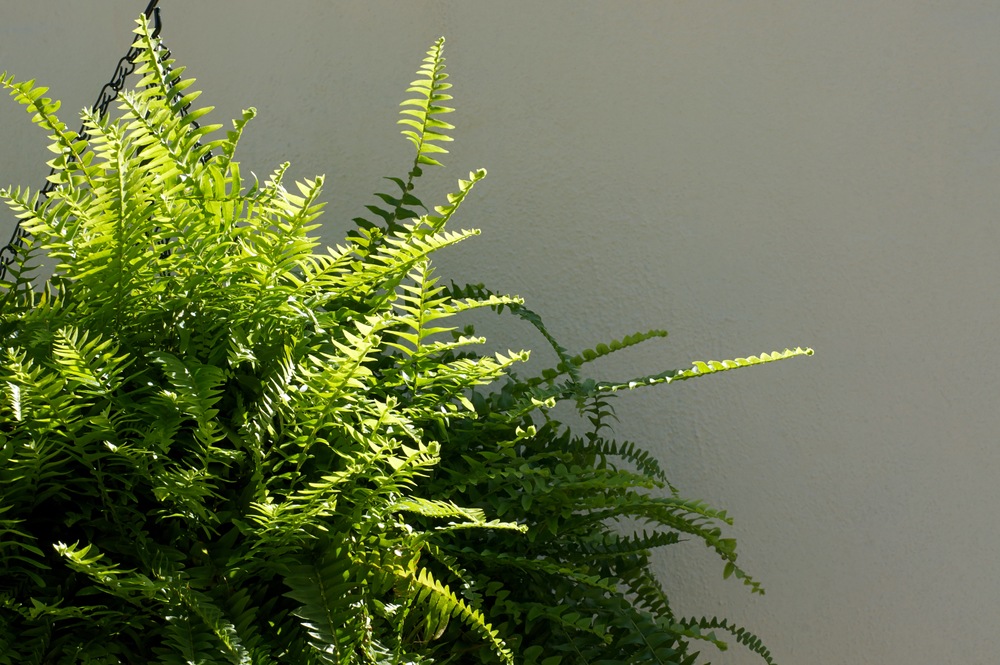
Any container garden isn’t complete without the classic Boston fern (Nephrolepis exaltata). The former plants are native to the Americas, Africa, and Polynesia and grow best in warm zones, between 10 and 12.
Boston ferns’ unique, sword-like foliage makes the perfect companion plant for wax begonias’ bold blooms. Those plants can grow up to 2-3 feet long and produce fronds of 20-96 inches. The latter consists of tiny, alternating leaflets that have a bluish-green shade.
The classic houseplant prefers moist, well-draining, loamy soil and thrives in partial sun. Additionally, feed them liquid fertilizer once a month during the growing season.





